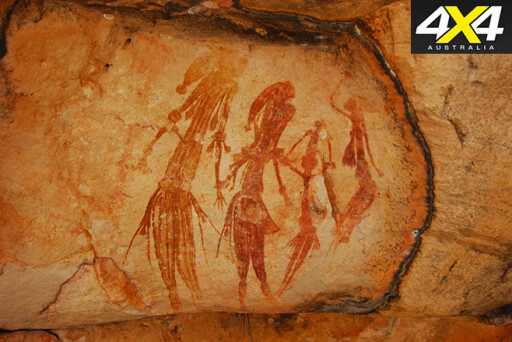.jpg )
It seems Australian scientists and researchers, with the assistance of Aboriginal traditional owners in northern Western Australia, are on the verge of reshaping Aboriginal history.
For many years the rock art of the Kimberley and northern Australia has been thought of – by some – as some of the oldest in the world. However, dating techniques date the Aboriginal art back some 17,500 years ‘Before Present’ (BP). That’s significantly younger than the oldest art so far discovered and dated at El Castillo in Spain (41,000BP) and the famous horses and cave lions of the Chauvet Cave in France that carry a 37,000-year-old tag.
Meanwhile, in 2014, a discovery of rock art in a network of caves in Sulawesi, Indonesia, returned a probable date of nearly 40,000 years, shifting the focus from Europe to this part of the world.
In the Kimberley, the two most distinctive forms of art are the acclaimed Wandjina figures and the much more lively and graceful Bradshaw paintings – now officially known as Gwion Gwion.
The late Graeme Walsh, a leading researcher at Bradshaws, brought the paintings to the attention of the world with his incredible work and subsequent books. Graeme was convinced the art was at least 35,000 years old.
Because of this research (and due to several other factors) many academics believe mankind reached Australia approximately 60,000 years ago – and the latest research indicates the Kimberley paintings are nearly that old as well. For a graphic representation of how mankind spread out of Africa, check out: www.bradshawfoundation.com/journey.
 The Kimberley Foundation Australia (KFA) is the driving force behind this latest study, while its Dating Project has been set up to determine how old the art in the region is and whether it dates back to Australia’s very earliest human occupation.
The Kimberley Foundation Australia (KFA) is the driving force behind this latest study, while its Dating Project has been set up to determine how old the art in the region is and whether it dates back to Australia’s very earliest human occupation.
The team uses a newly developed uranium radio-active decay dating method, developed by the Australian Nuclear and Science Technology Organisation. This method analyses tiny samples of rock crust from below and above the paintings and, so far, the results are pretty exciting.
The previously used radiocarbon dating technique wasn’t suitable for dating paintings because of the lack of organic matter in the samples.
If the art is as old as it seems to be, it would mean the rock art of the Kimberley is the oldest, continuous painted record anywhere on Earth. That is pretty bloody amazing.
What is equally amazing is the accessibility of some of these sites to wandering travellers in the Kimberley. For many four-wheelers travelling in this region of Australia the ancient rock art is a major attraction, and it’s a great privilege to be able to see them.
The Wandjina heads near the King Edward River crossing – on the way into the magnificent Mitchell Falls – provides the most significant viewing of this incredible art form, while nearby, with a bit of searching, some impressive Bradshaws can be found.
Those who wish to see some of the finest rock art in the Kimberley should contact Mount Elizabeth Station, where the hosts can arrange a tour to some more remote, spectacular sites.
Whatever the results of the latest research, the bodies of incredible rock art across the top of Australia are some of the finest in the world and we are extremely fortunate in being able to visit these places and admire the work of those ancient artists.

COMMENTS